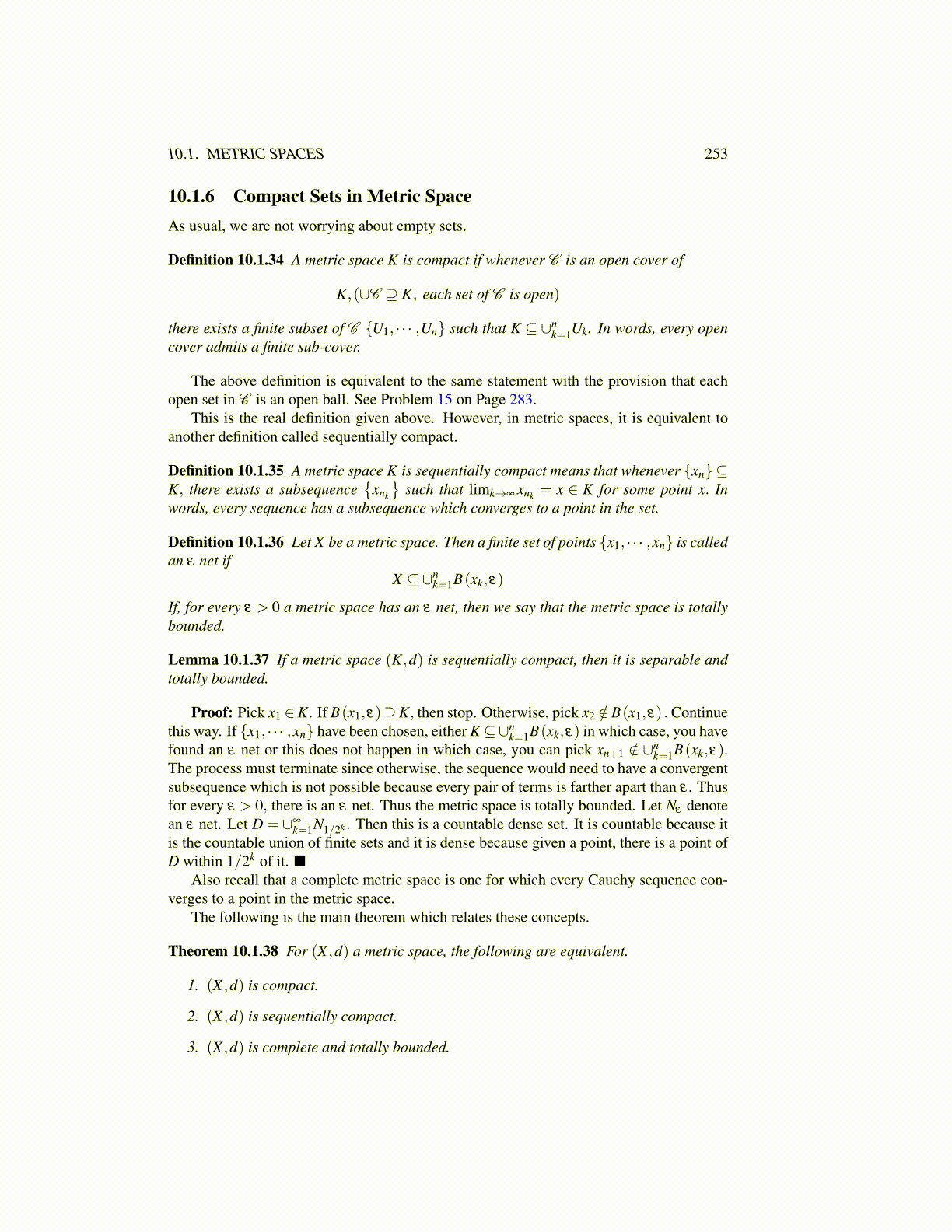
10.1. METRIC SPACES 253
10.1.6 Compact Sets in Metric SpaceAs usual, we are not worrying about empty sets.
Definition 10.1.34 A metric space K is compact if whenever C is an open cover of
K,(∪C ⊇ K, each set of C is open)
there exists a finite subset of C {U1, · · · ,Un} such that K ⊆ ∪nk=1Uk. In words, every open
cover admits a finite sub-cover.
The above definition is equivalent to the same statement with the provision that eachopen set in C is an open ball. See Problem 15 on Page 283.
This is the real definition given above. However, in metric spaces, it is equivalent toanother definition called sequentially compact.
Definition 10.1.35 A metric space K is sequentially compact means that whenever {xn} ⊆K, there exists a subsequence
{xnk
}such that limk→∞ xnk = x ∈ K for some point x. In
words, every sequence has a subsequence which converges to a point in the set.
Definition 10.1.36 Let X be a metric space. Then a finite set of points {x1, · · · ,xn} is calledan ε net if
X ⊆ ∪nk=1B(xk,ε)
If, for every ε > 0 a metric space has an ε net, then we say that the metric space is totallybounded.
Lemma 10.1.37 If a metric space (K,d) is sequentially compact, then it is separable andtotally bounded.
Proof: Pick x1 ∈K. If B(x1,ε)⊇K, then stop. Otherwise, pick x2 /∈B(x1,ε) . Continuethis way. If {x1, · · · ,xn} have been chosen, either K⊆∪n
k=1B(xk,ε) in which case, you havefound an ε net or this does not happen in which case, you can pick xn+1 /∈ ∪n
k=1B(xk,ε).The process must terminate since otherwise, the sequence would need to have a convergentsubsequence which is not possible because every pair of terms is farther apart than ε . Thusfor every ε > 0, there is an ε net. Thus the metric space is totally bounded. Let Nε denotean ε net. Let D = ∪∞
k=1N1/2k . Then this is a countable dense set. It is countable because itis the countable union of finite sets and it is dense because given a point, there is a point ofD within 1/2k of it. ■
Also recall that a complete metric space is one for which every Cauchy sequence con-verges to a point in the metric space.
The following is the main theorem which relates these concepts.
Theorem 10.1.38 For (X ,d) a metric space, the following are equivalent.
1. (X ,d) is compact.
2. (X ,d) is sequentially compact.
3. (X ,d) is complete and totally bounded.